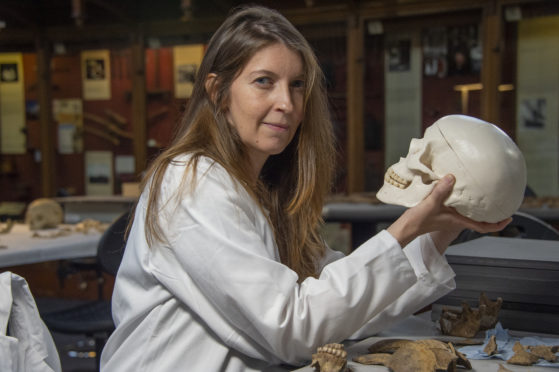Human remains found underneath an Aberdeen home were most likely buried by a medical student trying not to fall foul of the law, experts have established.
Bones were found in the soil of a garden by workers renovating a house on Canal Street in Old Aberdeen last November.
After police ruled out foul play, archaeology experts from Aberdeenshire Council and Aberdeen University visited the scene in an attempt to solve the mystery.
Through close examination of the bones, and the deciphering of records from the last 200 years over an 11-month period, the team were able to piece together the puzzle.
Aberdeenshire Council’s archaeologist, Bruce Mann, said: “The discovery of these bones reveals a little piece of the city’s lost history.”
Following the discovery, human bone specialist Alison Cameron, of Cameron Archaeology, spent several days excavating the garden to collect all the bones.
“I could see immediately that one of the skulls had been cut or sawn in an interesting way,” she said.
“It looked as if it had been cut in order to take the brain out, probably for experimentation or training purposes.
“A hole had been bored in the skull, and that, combined with the dates, led me to the conclusion that the bones were buried by a medical student.
“Technically, anatomisation was illegal, but this was a time when so much about the human body was unknown, even the circulation system for example.
“People felt they had to use bodies in this way in order to find out what happened inside us.
“But it was certainly done for medical purposes, rather than there being any foul play.”
The bones were given to Aberdeen University archaeology lecturer Rebecca Crozier for analysis.
In all, there were 115 bone fragments, with her tests able to show that they belonged to between five and seven people, two of whom were aged between two and seven.
A carbon dating test, performed at a laboratory in East Kilbride, concluded there was a 95.4% likelihood the bones were those of people living between 1650 and 1750.
Investigators were able to determine that at least two of the people’s bones – one adult and one child – had been used for the purposes of training new doctors.
Records told researchers that medical students lived at the Canal Street house around 1832.
